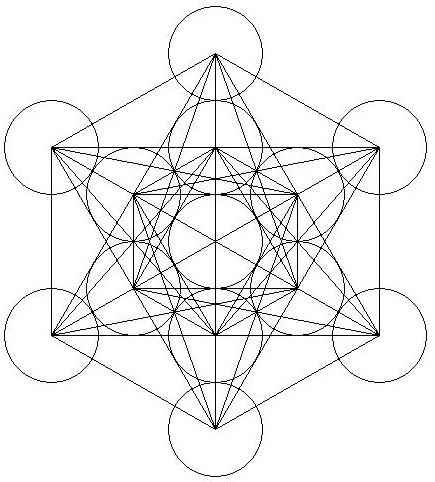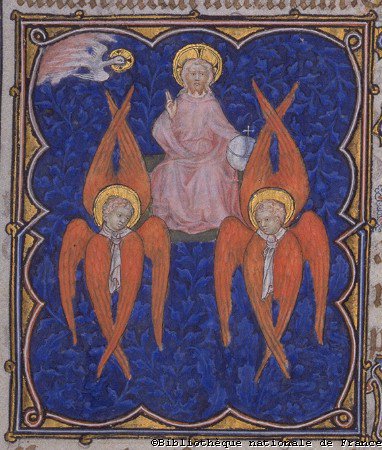-
Content count
2,358 -
Joined
-
Last visited
Posts posted by Spectrum
-
-
Oxen, Horses, Unicorns
-
Oh baby you know it seerest assassins
-
You only believe in Demons, but you don't believe in Angels? Or do you believe all Fallen Angels are Demon? I guess I don't understand...
Do you have an other thought or examples?
But I sure don't want to put my family at risk, even a person with the best intent can find there selfs in a mess.Messy Ego
-
All Aboard!
-
Fallen Guides?
Guides to/from where?
-
"Usually they are not found as decorative motifs but as integral parts of a story in bas-relief"
-
"in standing or in flying positions, usually holding lotus blossoms, spreading flower petals, or waving celestial clothes as if they were wings enabling them to fly"
-
Metatron
Metatron (Hebrew מטטרון or מיטטרון) is the name of an angel in Judaism and some branches of Christianity and Islam. There are no references to him in the Jewish Tanakh (Old Testament) or Christian Scriptures (New Testament). Although he is mentioned in a few brief passages in the Talmud, Metatron appears primarily in medieval Jewish mystical texts and other post-scriptural esoteric and occult sources. In Rabbinic tradition, he is the highest of the angels and serves as the celestial scribe, though there is no consensus as to his genesis, nor is there a Christian consensus on his position in the hierarchy of angels or existence.

The Metatron's Cube is a 2-dimensional figure created from 13 equal circles with lines from their centers extending out to the other 12 circles. Six circles are placed in a hexagonal pattern around a central circle, with six more extending out along the same radial lines.
This pattern shares resonance with the Flower of Life and the first three Platonic Solids. It is a Sacred Geometry figure. It's name makes reference to Metatron, though there has been no evidence shown relating the stories of Metatron to this design.

-
Email "Directly" before you spend money: [email protected]
edited to say: pls email directly I am on a mobile device and am unable to respond to pm's or the tb email daemon
-
I've had many nonejacualatory orgasms w my mates. Specifically when you push your mate to
orgasm and remain composed you reach a shared state and exchange vital
essense without draining your field. A genuine connection of Love is a
prerequisite in so far as inhibition and function being paired to conceive and
govern. In these states of self abandon the exchange of lovers is a divine medicine bringing balance to
the whole being.
-
-

Seraphim (Hebrew: שְׂרָפִים Seraphim, singular שָׂרָף Seraph; Latin: seraphi[m], singular seraph[us]; Greek: σεραφείμ) are a class of celestial beings in Judaism and Christianity. Literally "burning ones", the word is normally a synonym for snakes when used in the Hebrew bible, but they are mentioned in the Book of Isaiah as fiery six-winged beings attending on God. They appear again as celestial beings in an influential Hellenistic work, the Book of Enoch, and a little later in the Book of Revelation. They occupy the fifth of ten ranks of the hierarchy of angels in medieval and modern Judaism, and the highest rank in the Christian angelic hierarchy.
Seraphim, literally "burning ones", is the plural of "seraph", more properly sarap. The word sarap/seraphim appears three times in the Torah (Numbers 21:6-8, Deuteronomy 8:15) and four times in the Book of Isaiah (6:2-6, 14:29, 30:6). In Numbers and Deuteronomy the "seraphim" are snakes/serpents - the association of snakes as "burning ones" is possibly due to the burning sensation of the poison.[1] Isaiah also uses the word in close association with words to describes snakes (nahash, the generic word for snakes, in 14:29, andefeh, viper, in 30:6).
"Seraphim" appear in the 2nd century BCE Book of Enoch[4] where they are designated as drakones (δράκονες "serpents"), and are mentioned, in conjunction with the cherubim as the heavenly creatures standing nearest to the throne of God. In the late 1st century CE Book of Revelation (iv. 4-8) they are described as being forever in God's presence and praising Him constantly: "Day and night with out ceasing they sing: 'Holy, holy, holy is the Lord God Almighty, who was and is and is to come.'" They appear also in the Christian Gnostic text On the Origin of the World, described as "dragon-shaped angels".[5]
-

The Hebrew word Merkabah (מרכבה "chariot", derived from the consonantal root r-k-b with general meaning "to ride") is used in Ezekiel (1:4-26) to refer to the throne-chariot of God, the four-wheeled vehicle driven by four "chayot" (Hebrew: "living creatures"), each of which has four rings and the four faces of a man, lion, ox, and eagle..
According to the verses in Ezekiel and its attendant commentaries, the analogy of the Merkaba image consists of a chariot made of many angels being driven by the "Likeness of a Man." Four angels form the basic structure of the chariot. These angels are called the "Chayot" חיות (lit. living creatures). The bodies of the "Chayot" are like that of a human being, but each of them has four faces, corresponding to the four directions the chariot can go (north, east south and west). The faces are that of a man, a lion, an ox (later changed to a cherub in Ezekiel 10:14) and an eagle. Since there are four angels and each has four faces, there are a total of sixteen faces. Each Chayot angel also has four wings. Two of these wings spread across the length of the chariot and connected with the wings of the angel on the other side. This created a sort of 'box' of wings that formed the perimeter of the chariot. With the remaining two wings, each angel covered its own body. Below, but not attached to the feet of the "Chayot" angels are other angels that are shaped like wheels. These wheel angels, which are described as "a wheel inside of a wheel", are called "Ophanim" אופנים (lit. wheels, cycles or ways). These wheels are not directly under the chariot, but are nearby and along its perimeter. The angel with the face of the man is always on the east side and looks up at the "Likeness of a Man" that drives the chariot. The "Likeness of a Man" sits on a throne made of sapphire.
The Bible later makes mention of a third type of angel found in the Merkaba called "Seraphim" (lit. "burning") angels. These angels appear like flashes of fire continuously ascending and descending. These "Seraphim" angels powered the movement of the chariot. In the hierarchy of these angels, "Seraphim" are the highest, that is, closest to God, followed by the "Chayot", which are followed by the "Ophanim." The chariot is in a constant state of motion, and the energy behind this movement runs according to this hierarchy. The movement of the "Ophanim" is controlled by the "Chayot" while the movement of the "Chayot" is controlled by the "Seraphim". The movement of all the angels of the chariot are controlled by the "Likeness of a Man" on the Throne.
-
-
-
-
The Nymph and the Sage
"A story type or theme appearing over and over again in the Mahabharata is that of an Apsara sent to distract a sage or spiritual master from his ascetic practices. One story embodying this theme is that recounted by the epic heroine Shakuntala to explain her own parentage. Once upon a time, the sage Viswamitra generated such intense energy by means of his asceticism that Indra himself became fearful. Deciding that the sage would have to be distracted from his penances, he sent the Apsara Menaka to work her charms. Menaka trembled at the thought of angering such a powerful ascetic, but she obeyed the god's order. As she approached Viswamitra, the wind god Vayu tore away her garments. Seeing her thus disrobed, the sage abandoned himself to lust. Nymph and sage engaged in sex for some time, during which Viswamitra's asceticism was put on hold. As a consequence, Menaka gave birth to a daughter, whom she abandoned on the banks of a river. That daughter was Shakuntala herself, the narrator of the story."
-
6. Master of Fate
102 A glow in the sky
103 and soon you'll arise
104 Night pales
105 Day shines forth
106 You ride on thunder wheels
107 cloud banners trailing
108 heave great sighs
109 look back yearning
110 for earth's beauty burning
111 look and linger
112 forget your way
113 I draw a long arrow
114 and shoot Heaven's Wolf
115 then draw me down the Dipper
116 And plunge alone into
117 the White Void
-
"Rhythmic" Breathing
-
Natural Selection at it's Finest
-
7. Young Master of Fate (Shao Si Ming)
88 Hall full of lovely ones
89 Yet you had eyes for me alone
90 Riding a whirlwind A cloud for a banner
91 Suddenly you came
92 And as suddenly departed
93 And only had eyes for me
94 I bathed with you
95 in the Pool of Heaven
96 In a sunny fold of the hill
97 I dried your hair
98 Now it is I who shout & sing with despair
99 Under a chariot-awning
100 of peacock feathers & halcyon flags
101 You climb again to the Nine Heavens
-
Is this a Hands On seminar ?
-
Sensory Deprivation is one way. Complete Saturation in Nature in another way. There are many paths into town, but very few near mountain peaks.
-
Still works. Also the vowells are cavity sounds resonating through the trunk like timber of an instrument.


Dream Police
in General Discussion
Posted · Edited by Spectrum
A lot of people embrace their slavery...
repeating the same motions and thoughts until death...
...about talking without talking...
There's the shortcut and there's the long way Around.
"If you know who you are, you'll know what to do"